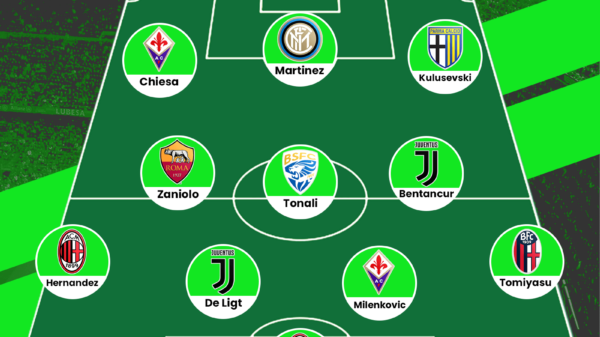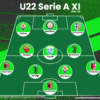The round of 16 never fails to throw up a few interesting fixtures every year. Chelsea-PSG, and Manchester City-Barcelona are both fixtures that took place last season, and were both quite enjoyable, but the real thought provoker from this season has been Borussia Dortmund vs Juventus. In terms of their performance domestically, the two teams are on different ends of the spectrum. Juventus enjoy sole domination of Italy, but Dortmund are having to wage war to avoid the ignominy of relegation. Despite such stark differences in their league performances, this was a game featuring two pretty evenly matched sides. The element of the unknown that comes into play with 2 vastly different teams like these simply adds to the intrigue.
Juventus 2-1 Borussia Dortmund
Juventus: Buffon; Lichtsteiner; Chiellini; Bonucci; Evra; Pirlo; Marchisio; Pogba; Vidal; Tevez; Morata.
Dortmund: Weidenfeller; Piczcsek; Sokratis; Hummels; Schmelzer; Sahin; Gundogan; Mkhitaryan; Reus; Aubemayang; Immobile
High Tempo Start
Generally, when people talk about the Bundesliga, and the Serie A, and talk about tempo, they’re making contrasts. The Bundesliga is one of the fastest leagues in the world, if not the fastest. German teams often play on the break, and at a breakneck pace. The Serie A on the other hand, has garnered a notorious reputation for the slow tempo many of its teams often adopt. The discomfort Italian teams have at a high tempo is something that German sides have taken advantage of in the past.
Thus, it was no surprise when Dortmund began the game at a very high tempo. The passes were mostly one or two touch, and they looked to get the ball behind Juventus as much as possible. The press too, something that Dortmund are famous for, was ferocious. They looked to win the ball back from their opponents as quickly as possible. Essentially, they played a very high line, and tried to camp in the opposition half. They had almost twice the number of passes in the attacking third as Juventus, and had more passes overall too. They attempted about 24 tackles in the first half alone, which is an incredibly high number.
The aim of the fast paced start was to get Juventus off their rhythm, and try and snatch an early goal. It worked to an extent as the Old Lady failed to settle in very well, and Dortmund dominated the early exchanges. Both sides scored, but of the two, Dortmund looked the more dangerous.
Space out wide
Juventus began the game in a diamond formation with midfielders who are generally accustomed to operating in the middle of the pitch. The diamond itself is a very narrow formation, leaving lots of space out in the wide areas, with the full backs often left exposed. With both flanks there to be attacked, the Dortmund wide men looked to move into the space, and provide the firepower for the men up front. The Juventus full backs too, chose to stay narrow, especially in the first half, allowing the Dortmund players to move into the wide areas. 74% of the Dortmund attacks came down the flanks. This did change to an extent in the second half, as the Juventus full backs got much wider, and started picking up the man on the ball.

Image courtesy squawka.com
Both Pisczcek and Schmelzer spent a lot of time in the opposition half, and were, more often than not, the sole occupants of the flanks. On the right, Aubemayang later moved into a wide position as he needed to cover the attacking deficiencies of the new boy, and Sokratis.
Sadly for Dortmund, they didn’t really make this space count. In fact, they lacked a good finisher and presence in the box generally. Der BVB enjoyed greater possession, and looked to have the better of the Italians.
Juventus countering quickly
The pattern of the game was quite strange, with Juventus often sitting back and playing on the break, and Dortmund dominating the ball and dictating the play. It was a reversal of roles, as one generally expects the home side to control the ball, but it worked out differently here, and interestingly, will probably work out the same way in the next leg.
While Dortmund did boss possession, the chances fell to the Italians as well. They were able to break with pace on multiple occasions, and really caused some trouble to the BVB defence. A number of factors saw this sort of play taking place.
Dortmund began by pressing Juventus hard. It was a risky tactic, as it could, and often did, work out in favour of Juventus on the break. On the occasions where they did manage to beat the press, they were in on the Dortmund defence, and players like Hummels had to make desperate tackles to keep Juve at bay.
The counter attacking football that was so successful in turn came from the formation Juventus played. The diamond is a narrow shape, but it provides a large number of options for vertical passes. Even in the phase when they were set to win the ball back, they had at least 2 strikers up front (courtesy the formation). This meant that it was a 2 vs 2 situation when Juventus were breaking (see the first goal). Even when it wasn’t a full fledged counter, the Bianconeri had around 3 bodies all ready and waiting for the vertical pass forward.
Using the inside channel
In the first half of the game, Juventus stayed narrow and allowed Dortmund to utilise the wide areas and the flanks. Dortmund couldn’t really take advantage and play any killer balls, and that was their mistake. But pushing full backs high up the pitch like Dortmund did tends to invite the opposition into the spaces left behind by these full backs.
Juventus did exactly that. To start off with, both their strikers didn’t shy away from drifting wide from time to time in an attempt to drag the centre back with them. The movement generally led to players ending up on the wide marker of the penalty area, and delivering from there. Both Juventus goals came from a shot/pass that originated in this area, and numerous other chances were also created from this angle. With Dortmund rushing backwards almost every time they lost the ball, this part of the pitch was often a second priority to the middle.
Where does this leave them?
The match is poised very delicately at this moment. One would back Dortmund to find the back of the net at least once in front of their home support, but at the same time, Juventus have something to hang on to. Also, having seen the rewards to be had on the counter, Allegri may just have his team sit back and wait for the opportunity to present itself. It won’t be a big surprise to see the same, or a similar pattern of play emerging during the second leg. Who this favours is the toughest question of the lot.
Written by Vishal Patel
- Analysis: Are Chelsea’s pressing issues a concern? - October 5, 2020
- Has Financial Fair Play Been Worth It? - August 27, 2020
- Tactical Philosophy: Frank Lampard - May 20, 2020


























































